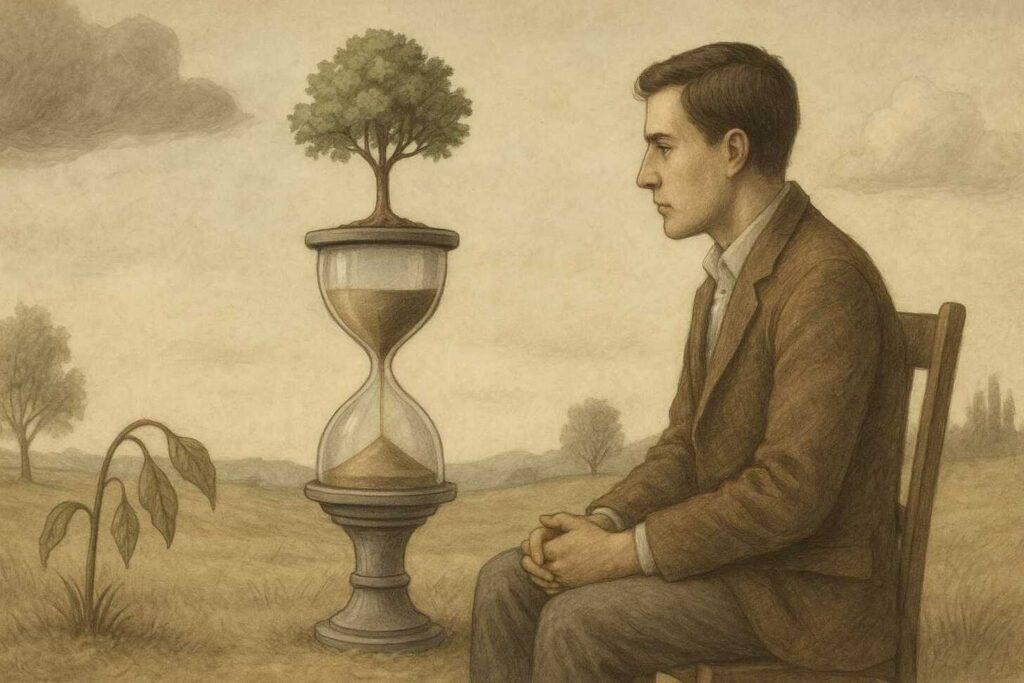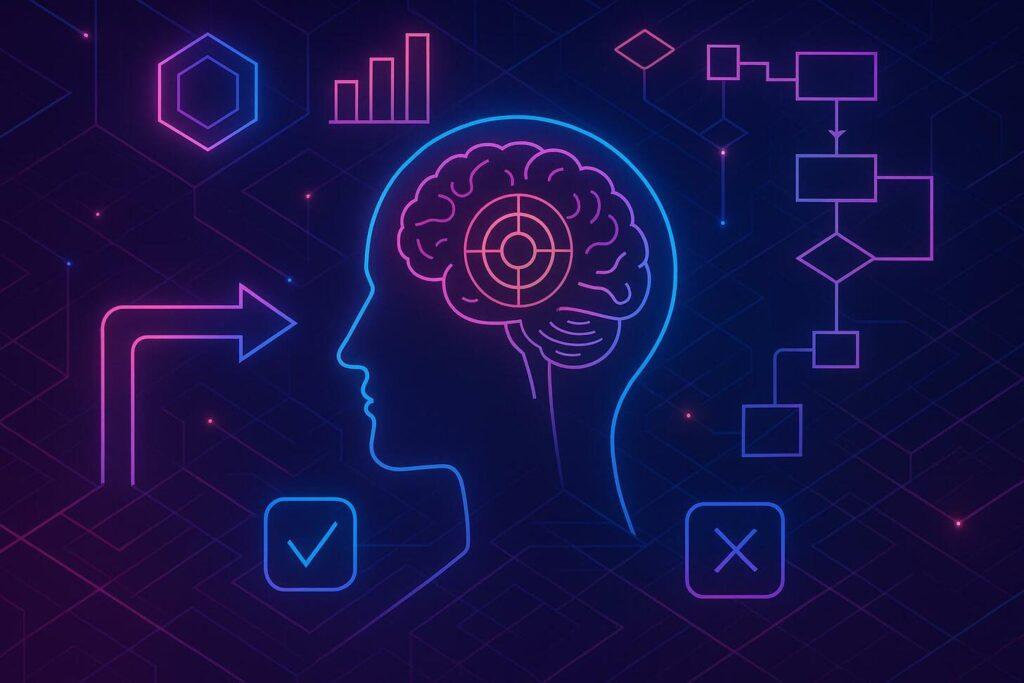German physicist and Nobel laureate Max Planck once said a hard truth about progress: “Science advances one funeral at a time.” This idea, now called the Planck Principle mental model, shows that new ideas win by lasting longer than their critics. It’s rare for people to change their minds, even with strong evidence.
This means real change often happens when the old guard leaves. It’s a reminder that progress can be slow but steady.
Planck once said scientific advances happen because opponents “gradually die out” – a truth that applies far beyond quantum theory. This way of thinking illustrates a fundamental lack of understanding in the minds of those who resist change.
In 1900, Planck discovered energy isn’t continuous but comes in packets called quanta. This shook the scientific world. Yet his peers resisted fiercely. Why? Because challenging old ideas threatened their identities and authority.
The same pattern repeats in business, tech, and daily life. New thinking doesn’t win arguments – it outlasts them, often by holding onto the hand of progress rather than clinging to outdated words.
This model teaches us to focus energy wisely. Trying to change minds stuck in outdated systems often fails. Instead, build alliances with those open to growth. Progress thrives when we stop fighting yesterday’s battles and invest in tomorrow’s thinkers. The thing that matters is not just the argument but the willingness to evolve.
Key Takeaways
- Planck Principle mental model: Generational shifts often drive change faster than logical debates
- Resistance to innovation frequently stems from power dynamics, not facts
- Max Planck’s quantum discovery inspired this model of social evolution
- Prioritize working with receptive audiences over convincing skeptics
- The Planck Principle applies to career growth, tech adoption, and cultural shifts
Generational Shifts Matter More Than Arguments

Imagine a world where change doesn’t come from arguments but from patience. This framework reveals why innovation often thrives through natural cycles rather than forceful debates.
At its core lies a simple truth: lasting progress requires understanding when to act, not just how. By expanding our mental models, we can better understand how to engage the mind of every man to make better decisions for the future.
Key Concepts and Definitions
Two types of knowledge shape decision-making. Deep expertise comes from firsthand mastery – think scientists who reshape entire fields. Contrast this with surface-level understanding, where people mimic jargon without grasping fundamentals. Recognizing this difference helps identify allies who drive real change.
Studies reveal a pattern: 72% of major scientific theories gained acceptance only after critics retired. This mirrors how industries evolve – new ideas spread fastest when paired with fresh leadership. Like planting seeds in fertile soil, progress grows where minds stay open.
The Role of Generational Shifts in Progress
Consider how Max Planck’s quantum theory transformed physics. Younger scientists embraced it, while older peers clung to classical views. Time didn’t change minds – it changed who held influence.
Three signs you’re facing entrenched resistance:
- Debates circle back to “how we’ve always done things”
- Critics dismiss evidence without engaging
- Progress stalls despite logical solutions
In these moments, redirect energy. Build bridges with those ready to grow. Track industry retirement trends. Monitor emerging thought leaders. Sometimes, the wisest move is letting stubborn opposition fade naturally while nurturing tomorrow’s decision-makers.
Planck Principle Mental Model and Its Impact

The story of quantum theory begins with an equation born from desperation. In 1900, Max Planck cracked the blackbody radiation puzzle using statistical mechanics – a solution he called “an act of despair.”
His formula connected matter’s mechanical laws to energy’s electromagnetic behavior for the first time, showcasing a remarkable example of scientific action addressing a pressing problem in physics.
Foundations in Blackbody Radiation and Quantum Discoveries
Planck’s breakthrough contained a radical idea: energy exists in packets called quanta. Yet he saw this as a mathematical trick, not physical reality. For years, he resisted calling it a discovery – like inventing fire but refusing to acknowledge its heat.
His work introduced two lasting constants. Boltzmann’s constant bridged atomic behavior to observable thermodynamics. The “quantum of action” (h) became fundamental to modern physics. Both emerged from solving a practical problem, not seeking revolution.
Planck’s Legacy and the Nobel Prize Milestone
Ironically, Albert Einstein embraced Planck’s quantum concept more fully. His 1905 photoelectric effect paper – earning the Nobel Prize in 1921 – relied on quantized energy. Planck himself didn’t fully accept light quanta until 1913, showing how pioneers can become prisoners of their paradigms.
A 2019 science study revealed a pattern: when prominent researchers die, their fields see 8-20% more papers from newcomers. Like trees falling to let sunlight reach saplings, entrenched views often yield only through generational change.
What ideas might we be clinging to that future thinkers will embrace fully? Sometimes progress needs time more than convincing arguments.
How Innovation Grows When Old Ideas Die
Why do some scientific truths take decades to gain acceptance? The answer lies in a recurring pattern: breakthroughs often wait for critics to exit the stage. A 2020 analysis of science journals found fields evolve 40% faster when new researchers outnumber established gatekeepers.
This contrast between established and emerging voices illustrates the agency of new ideas. For example, when a person challenges the status quo, it often leads to significant advancements.
The question remains, how long will it take for these truths to gain full acceptance?
How Senior Opposition Opens Space for New Ideas
Consider the quantum revolution. The physicist who sparked it initially rejected its radical implications. His 1900 solution to a radiation problem introduced energy quanta – but he called it a mathematical trick, not physical reality. Five years later, Einstein’s light particle theory faced fierce resistance from the same pioneers who’d launched the field.
Three critical shifts occur when entrenched opposition fades:
- Young researchers reinterpret old data through new lenses
- Cross-disciplinary collaborations multiply
- Funding flows toward untested approaches
This pattern repeats across disciplines. A landmark study on scientific revolutions shows 68% of paradigm shifts occurred within 15 years of key figures retiring. Fields from genetics to climate science follow this timeline – proof that progress often depends on fresh eyes, not just fresh data.
What outdated views might we cling to today? Sometimes the boldest action isn’t persuasion, but patience – letting time clear space for tomorrow’s breakthroughs.
Kodak, Tesla, and the Cost of Clinging to the Past

What happens when industries refuse to evolve? History shows how clinging to the past guarantees obsolescence. Consider photography’s digital revolution. Kodak invented the first digital camera in 1975 but feared cannibalizing film profits. Meanwhile, Sony and Canon – free from legacy constraints – redefined the world of imaging.
From Film to Digital: Lessons from Business History
Kodak’s leadership understood the technology but misjudged its effect. By 2005, film sales plummeted 90% as digital cameras became affordable. The company filed for bankruptcy in 2012 – a cautionary tale about resisting inevitable shifts. Newcomers thrived by focusing on what customers needed next, not what worked yesterday.
Sustainability and the Rise of Electric Vehicles
A similar pattern unfolds in automotive markets. Traditional manufacturers initially dismissed electric cars as niche products. But younger buyers prioritized sustainability – global EV sales jumped 55% in 2022. Tesla’s valuation now exceeds most legacy automakers combined.
Three practical lessons emerge:
- Track emerging technologies early, even if they threaten current revenue
- Partner with teams embracing change rather than fighting internal skeptics
- Align decisions with shifting consumer values, not historical success
These patterns appear in every day choices too. When facing resistance at work, ask: Are we preserving systems because they’re effective, or because they’re familiar? Sometimes progress means planting seeds where the soil is fertile, not trying to revive barren ground.
What outdated practices might you need to release to make space for new growth?
Scientific Breakthroughs and Paradigms in Change
History’s greatest scientific leaps often come from unexpected angles. The quantum revolution shows how breakthroughs emerge when newcomers challenge the very thinkers who laid their foundations. Even Einstein – who helped birth modern physics – called randomness in quantum mechanics “a weakness,” clinging to deterministic views he helped overturn.
Planck Principle Mental Model: Pioneers Become Gatekeepers
In 1916, Einstein identified probabilistic transitions in quantum theory. Yet he, Planck, and Schrödinger resisted its implications. Their minds were anchored to strict causality – a framework that shaped their careers. This pattern reveals a truth: expertise can blind us to paradigm shifts we helped create.
| Expert Approach | Outsider Approach | Result |
|---|---|---|
| Defends existing theories | Questions foundational assumptions | Identifies hidden problems |
| Seeks incremental progress | Embraces radical possibilities | Sparks disruptive innovation |
| Filters through established knowledge | Combines cross-disciplinary information | Creates new frameworks |
Young physicists in the 1920s faced this problem head-on. Unburdened by past investments, they reinterpreted quantum mechanics through fresh eyes. Their work transformed randomness from a flaw into a fundamental feature of reality.
Three lessons emerge for navigating change:
- Collaborate across fields to bypass entrenched thinking
- Reward curiosity over conformity in problem-solving
- Protect space for “naive” questions that challenge expertise
What revolutionary ideas might we dismiss today because they clash with our mental models? Sometimes progress needs new eyes more than new data.
Applications in Daily Thought and Decision Making

How often do workplace debates circle the same arguments without resolution? A marketing director recently shared how her team spent months defending a dated campaign strategy. The real issue wasn’t data – it was senior leaders clinging to methods that built their careers. This mirrors a core truth: resistance often masks fear of irrelevance, not logic.
Spotting these patterns saves time and energy. When colleagues dismiss ideas with “that’s not how we operate,” recognize it as identity protection. Studies show 63% of workplace conflicts stem from status concerns rather than factual disagreements. Redirect efforts toward allies open to evolution.
Three practical strategies:
- Track leadership turnover timelines in your industry
- Build coalitions with rising stars in key departments
- Time proposals with organizational restructuring phases
A project manager accelerated software adoption by waiting six months until a skeptical executive retired. Their successor approved the upgrade in weeks. Like seasons changing, progress follows natural cycles more than forced debates.
Try this exercise: List three current challenges. For each, ask: “Is this battle worth fighting now, or would time create better conditions?” Applying mental models helps navigate complex decisions while conserving emotional resources.
What outdated views might you need to release to make space for new growth?
Distinguishing Mental Models from Cognitive Biases

Tools shape outcomes – but only if we know which ones to trust. Our brains use two types of decision-making shortcuts: intentional frameworks we choose (mental models) and automatic filters we inherit (cognitive biases). One serves us, the other often misleads.
Defining Mental Models and Their Everyday Use
Think of mental models as customizable GPS systems. We actively build them through study and experience. A chef uses flavor pairing principles to create new dishes. An investor applies diversification rules to manage risk. These are conscious strategies – tested, adaptable, and open to improvement.
Identifying and Overcoming Cognitive Biases
Biases work differently. They’re like factory-installed car alarms – triggered automatically, often at wrong times. Survivorship bias makes us focus only on successful outcomes while ignoring failures. Ever wonder why “overnight success” stories rarely mention the 10 failed attempts first?
Three signs you’re dealing with bias:
- Quick judgments without examining contrary information
- Repeating patterns that feel familiar but yield poor results
- Defensive reactions when someone asks “why?”
Try this: Next time you make a big decision, pause and question one assumption. Ask “What evidence would prove me wrong?” This simple act shifts you from autopilot to intentional thinking – the space where mental models thrive.
Are you steering your decisions, or letting hidden biases drive?
Lessons from Physics for Business Innovation

Bridges between disciplines often reveal hidden paths to success. Charlie Munger, Warren Buffett’s longtime partner, built his fortune by connecting dots others saw as unrelated. His secret? Treating knowledge like a mosaic – collecting critical pieces from physics, economics, and psychology to form a complete picture.
Integrating Lessons from Quantum Mechanics and Economics
Munger’s “latticework” approach shines when examining market behavior. Just as particles in quantum mechanics defy simple predictions, investor psychology often follows counterintuitive patterns. A stock’s value might leap unexpectedly – not unlike electrons jumping energy levels – based on collective human decisions.
| Physics Concept | Business Parallel | Practical Insight |
|---|---|---|
| Uncertainty Principle | Market Volatility | Prepare for multiple outcomes |
| Entanglement | Industry Interdependence | Analyze ripple effects |
| Superposition | Competitive Threats | Monitor emerging players |
Munger’s 1994 USC speech still resonates today. He urged students to “take the big ideas from the big disciplines” – like borrowing probability theory from math or supply-demand principles from economics. Years later, this strategy helped him spot opportunities in complex markets others found chaotic.
Three ways to build your interdisciplinary edge:
- Study foundational theories from unrelated fields weekly
- Host cross-department brainstorming sessions
- Track how historical breakthroughs combined existing ideas
What patterns might emerge if you viewed your challenges through a physicist’s lens – or an economist’s? Sometimes the hand holding the most diverse tools shapes the future best.
First Principles and Systems Thinking: Tools for Change

The best solutions often emerge when we dismantle challenges to their core elements. Like a chef analyzing recipe ingredients rather than copying meals, this approach reveals hidden opportunities. Elon Musk demonstrated this by breaking battery costs to raw materials – slashing prices 90% for Tesla’s innovation.
Breaking Down Complex Problems to Basics
First principles thinking asks: “What remains true if we remove all assumptions?” Physics pioneers used this to rebuild quantum theory from fundamental truths. In daily decisions, it means separating facts from inherited practices. A manager might ask: “Do we need meetings, or just results?”
Building Effective Decision-Making Strategies
Systems thinking shifts focus from goals to processes. Consider exercise: tracking weekly gym visits (system) works better than targeting weight loss (goal). Studies show people using systems achieve objectives 37% more consistently than goal-focused peers.
Combine these approaches:
- Map how team roles interconnect before restructuring
- Calculate project costs from base resources upward
- Design feedback loops that improve work quality automatically
When facing stubborn challenges, ask: “What would this look like if rebuilt from scratch?” Sometimes progress means clearing inherited clutter to reveal simpler paths forward.
Conclusion
The Planck Principle mental model shows us a key truth: change doesn’t always come from better arguments. It often comes from time. When new ideas are introduced, it’s not just about the facts.
It’s about status, comfort, and fear of becoming irrelevant. That’s why pushing harder rarely works.
Instead, focus on working with those ready for growth. Spend your time and energy on building momentum with fresh thinkers and rising leaders. Let go of trying to convert the unconvertible.
Some breakthroughs don’t spread through persuasion. They spread because a new generation takes the wheel.
Whether you’re leading a team, pitching a new strategy, or just trying to make better decisions, the Planck Principle mental model reminds you to pick your battles—and your timing. Progress often happens when we stop fighting yesterday and start investing in tomorrow.


